 W
WHieronymus Andreae, or Andreä, or Hieronymus Formschneider, was a German woodblock cutter ("formschneider"), printer, publisher and typographer closely associated with Albrecht Dürer. Andreae's best known achievements include the enormous, 192-block Triumphal Arch woodcut, designed by Dürer for Maximilian I, Holy Roman Emperor, and his design of the characteristic German "blackletter" Fraktur typeface, on which German typefaces were based for several centuries. He was also significant as a printer of music.
 W
WJohann Balhorn the Younger was a German printer in Lübeck. He followed his father, Johann Balhorn the Elder in the printing trade, from whom he took over the printing house. Both used as a monogram the pictured printer's mark and a seal with a horn and three balls. In a play on their name the German word verballhornen, which means "parody", was coined.
 W
WJohann Bämler was a printer, illuminator and bookseller from Augsburg, Germany.
 W
WErnst Henrich Berling was a German-Danish book printer and publisher. From 1749 he published Danske Post Tidender, which would later become Berlingske Tidende.
 W
WJohann Bussemacher was a German engraver and publisher.
 W
WJohann Carolus was a German publisher of the first newspaper, called Relation aller Fürnemmen und gedenckwürdigen Historien. The Relation is recognised by the World Association of Newspapers, as well as many authors, as the world's first newspaper.
 W
WHans Dorn was a German printer of the late 15th and early 16th centuries, active in Brunswick He is known to have been in Brunswick during the period of 1493–1525.
 W
WChristian Egenolff or Egenolph, also known as Christian Egenolff, the Elder, was the first important printer and publisher operating from Frankfurt-am-Main, and best known for his Kräuterbuch and re-issue of books by Adam Ries, Erasmus von Rotterdam and Ulrich von Hutten.
 W
WHeinrich Eggestein is considered, along with Johannes Mentelin, to be the earliest book printer in Strasbourg and therefore one of the earliest anywhere in Europe outside Mainz.
 W
WSigmund Feyerabend was a bookseller and publisher at Frankfort. To him are attributed the woodcuts from the designs of Virgil Solis in a German Bible printed at Frankfort in 1561, and the portraits of the Doges of Venice in Kellner's Chronica, also printed at Frankfort in 1574. He died in 1590. He signed his cuts with SF or a monogram. Several of his relations also were wood-engravers, and one of them, M. Feyerabend, who worked about 1578, executed several figures after Melchior Lorch.
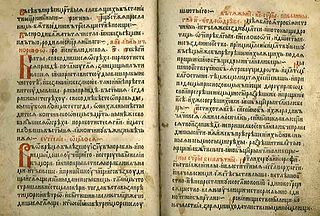 W
WSchweipolt Fiol was a German-born 15th century pioneer of Cyrillic printing.
 W
WJohann Fust or Faust was an early German printer.
 W
WGeorg Joachim Göschen was a German publisher and bookseller in Leipzig, Kingdom of Saxony, notable for typography and his publications of music and philosophy. He was the patriarch of the Goschen family, whose English branch rose to prominence as bankers and politicians, including the Viscounts Goschen and Goschen baronets.
 W
WHeinrich Gran was a German book printer of the incunabular era. Together with Johannes Mentelin and Heinrich Eggestein, he was one of the pioneers of book-printing in Alsace.
 W
WJohannes (Hans) Grüninger (1455–1533) was a German printer whose career spanned from 1482 to 1533 and produced up to 500 publications. Grüninger was one of the single most prolific printers of Strasbourg, printing up to 80 books a year. While a great deal of his publications were Catholic, he managed to print a great variety of works ranging from humanist to scientific texts. His work was fairly equally representative of both Latin and the vernacular; about 39% of his works were printed in Latin and the remaining 61% in German.
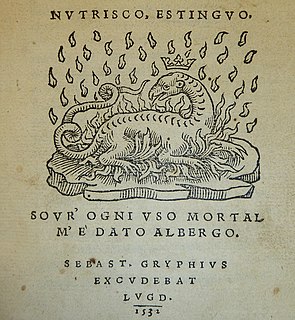 W
WSebastian Gryphius was a German bookseller-printer and humanist.
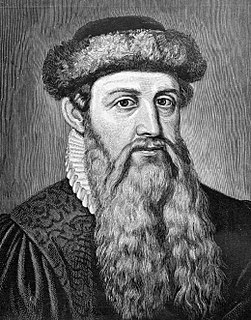 W
WJohannes Gensfleisch zur Laden zum Gutenberg was a German goldsmith, inventor, printer, and publisher who introduced printing to Europe with his mechanical movable-type printing press. His work started the Printing Revolution and is regarded as a milestone of the second millennium, ushering in the modern period of human history. It played a key role in the development of the Renaissance, Reformation, Age of Enlightenment, and Scientific Revolution, as well as laying the material basis for the modern knowledge-based economy and the spread of learning to the masses.
 W
WWolf (Benjamin) ben Samson Heidenheim was a German exegete and grammarian.
 W
WAnton Koberger was the German goldsmith, printer and publisher who printed and published the Nuremberg Chronicle, a landmark of incunabula, and was a successful bookseller of works from other printers. In 1470 he established the first printing house in Nuremberg. Koberger was the godfather of Albrecht Dürer, whose family lived on the same street.
 W
WJacob Köbel (1462–1533) was a printer and publisher in Oppenheim.
 W
WFriedrich Gottlob Koenig was a German inventor best known for his high-speed steam-powered printing press, which he built together with watchmaker Andreas Friedrich Bauer. This new style of printing press could print up to 1,100 sheets per hour, printing on both sides of the paper at the same time.
 W
WJacob Christoph Le Blon, or Jakob Christoffel Le Blon, was a painter and engraver from Frankfurt who invented the system of three- and four-colour printing, using an RYB color model which segued into the modern CMYK system. He used the mezzotint method to engrave three or four metal plates to make prints with a wide range of colours. His methods helped form the foundation for modern colour printing.
 W
WLotter was the last name of a family of German printers, intimately connected with the Reformation.
 W
WSilvio Meier (1965–1992) was an East German activist and squatter who was killed by neo-Nazis in Berlin on 21 November 1992. After moving to East Berlin in 1986, Meier became involved in oppositional politics with the Church from Below. His death has been commemorated with an annual memorial march and the renaming of a street in the Berlin district of Friedrichshain.
 W
WJohannes Mentelin, sometimes also spelled Mentlin, was a pioneering German book printer and bookseller active during the period during which incunabula were printed. In 1466, he published the first printed Bible in the German language, the Mentelin Bible].
 W
WJost de Negker was a cutter of woodcuts and also a printer and publisher of prints during the early 16th century, mostly in Augsburg, Germany. He was a leading "formschneider" or blockcutter of his day, but always to the design of an artist. He is "closely tied to the evolution of the fine woodcut in Northern Europe". For Adam von Bartsch, although he did not usually design or draw, the quality of his work, along with that of Hans Lützelburger and Hieronymus Andreae, was such that he should be considered as an artist. Some prints where the designer is unknown are described as by de Negker, but it is assumed there was an artist who drew the design, although it has been suggested that de Negker might fill in a landscape background to a drawing of a figure.
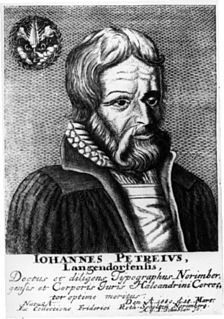 W
WJohann(es) Petreius was a German printer in Nuremberg.
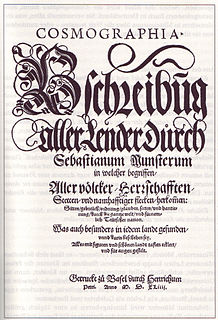 W
WHenricus Petrus (1508–1579) and his son Sebastian Henric Petri headed the printer shop of Basel, called Officina Henricpetrina.
 W
WAlbrecht Pfister was one of the first European printers to use movable type, following its invention by Johannes Gutenberg. Working in Bamberg, Germany, he is believed to have been responsible for two innovations in the use of the new technology: printing books in the German language, and adding woodcuts to printed books. The typefaces of Pfister, although similar to Gutenberg's, have their own peculiarities.
 W
WPurger & Co. was a German printing house, based at Mozartstraße 13, Munich, Germany. The founder of the company was most probably named Adolf Purger. The company was known for the coloured postcards it produced in the beginning of the 20th century. The postcards were printed in three colour chromolithography, a system called photochrome, with the indication Photochromiekarte. The company was printing not only postcards for their own account, but also for other companies, as was the case of the colour postcards of the Krikelli's series of Tinos, Greece.
 W
WErhard Ratdolt (1442–1528) was an early German printer from Augsburg. He was active as a printer in Venice from 1476 to 1486, and afterwards in Augsburg. From 1475 to 1478 he was in partnership with two other German printers.
 W
WGeorg Rhau (Rhaw) was a German publisher and composer. He was one of the most significant music printers in Germany in the first half of the 16th century, during the early period of the Protestant Reformation. He was principally active in Wittenberg, Saxony, the town where Martin Luther is said to have nailed the Ninety-five Theses to the door of the Castle Church, initiating the Reformation. Rhau's support as a printer was critical to Luther's success.
 W
WChristoph Sauer was the first German-language printer and publisher in North America.
 W
WPeter Schöffer or Petrus Schoeffer was an early German printer, who studied in Paris and worked as a manuscript copyist in 1451 before apprenticing with Johannes Gutenberg and joining Johann Fust, a goldsmith, lawyer, and money lender.
 W
WJohann Snell was a German printer. He appears to have been born in Hannover and was in Rostock in 1475, where he apparently served his apprenticeship with the Brotherhood of St. Michael, and in Lübeck in 1480, where he was an independent printer and bookbinder. He may also have studied at the University of Rostock in 1481.
 W
WJohann Spies was a German printer who published an anonymous book of tales about a legendary Doctor Faust who made a pact with the Devil. The story became the basis for several notable literary works, including Marlowe's Tragedy of Doctor Faustus and Goethe's Faust.
 W
WPhilip Spiro was the head of the German printing firm of Spiro Brothers of Hamburg who from 1864 to about 1880 produced around 500 different lithographed reproductions of postage stamps.
 W
WKasper Straube was a German 15th-century printer from Bavaria.
 W
WKarl Christoph Traugott Tauchnitz was a German printer and bookseller. He was born at Grosspardau, near Grimma and Leipzig, Germany. He learned the printer's trade at Leipzig, and worked in the printing house of Unger in Berlin. In 1792 he entered the house of Sommer in Leipzig. He began a small printing business of his own in Leipzig in 1796. In 1798 he opened a bookstore in connection with the printing business, and in 1800 a type foundery. His business, “Karl Tauchnitz,” became one of the largest establishments of the kind in Germany.
 W
WBenedictus Gotthelf Teubner was a German bookseller and the founder of a publishing company.
 W
WJohann Friedrich Gottlieb Unger was a German printer and publisher.
 W
WFlorian Ungler and Kasper Hochfeder were printers from Bavaria that after 1510 became pioneers of printing and publishing in the Polish language.1512 Introductio in Ptolomei Cosmographiam, with maps of America 1513 Biernat of Lublin's Raj duszny or Hortulus Animae, was considered the first book printed entirely in Polish. It is, in fact, the second. 1514 Orthographia seu modus recte scribendi et legendi Polonicum idioma quam utilissimus, the first Grammar of Polish language
 W
WErnst Vögelin was a 16th-century German pioneer book printer.
 W
WHans Weinreich was a publisher and printer of German and Polish language books in the first half of the sixteenth century. Weinreich was originally from Danzig (Gdańsk) in Royal Prussia, Kingdom of Poland, and then moved to Königsberg (Królewiec) in Ducal Prussia at the invitation of Albert of Prussia.
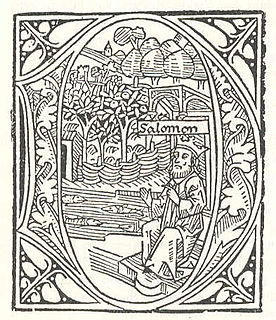 W
WGünther Zainer was the first printer in Augsburg, where he worked from 1468 until his death; he produced about 80 books including two German editions of the Bible and the first printed calendar. He came to Augsburg from Strassburg and printed in 1472–76 three large works of moral instruction. He also printed the first large illustrated book, Jacobus de Voragine's Legenda aurea in 2 volumes with 131 woodcuts, 1471–76. Johann Zainer, the first printer in Ulm, was probably his brother.
 W
WUlrich Zell was an early printer in Cologne, Germany.